© 2025 MJH Life Sciences™ , Patient Care Online – Primary Care News and Clinical Resources. All rights reserved.
10 Questions on the Year in Primary Care
From measles resurgence to new CVD guidelines, refresh your memory of this year’s highlights with our quiz on the most-read content on Patient Care®.
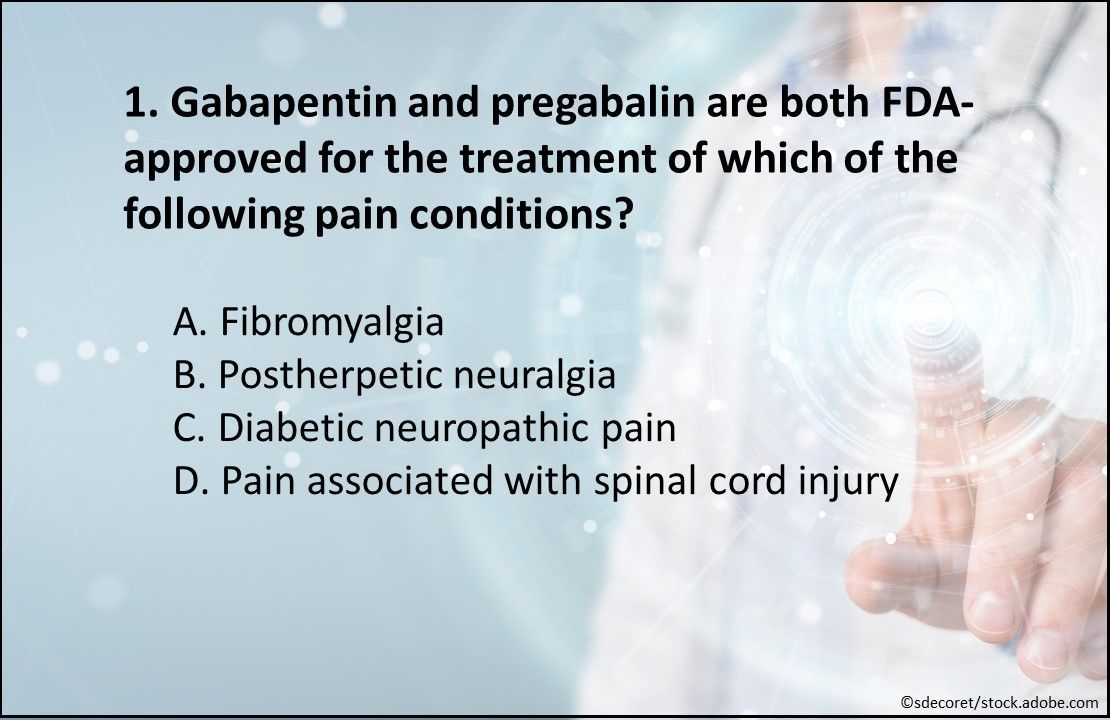
Question 1. Gabapentin and pregabalin are both FDA-approved for the treatment of which of the above pain conditions?

Answer: B. Postherpetic neuralgia. Postherpetic neuralgia is the only pain condition for which gabapentin is approved by the FDA. Pregabalin, however, is FDA-approved for the treatment of postherpetic neuralgia as well as fibromyalgia, diabetic neuropathic pain, and pain associated with spinal cord injury.1
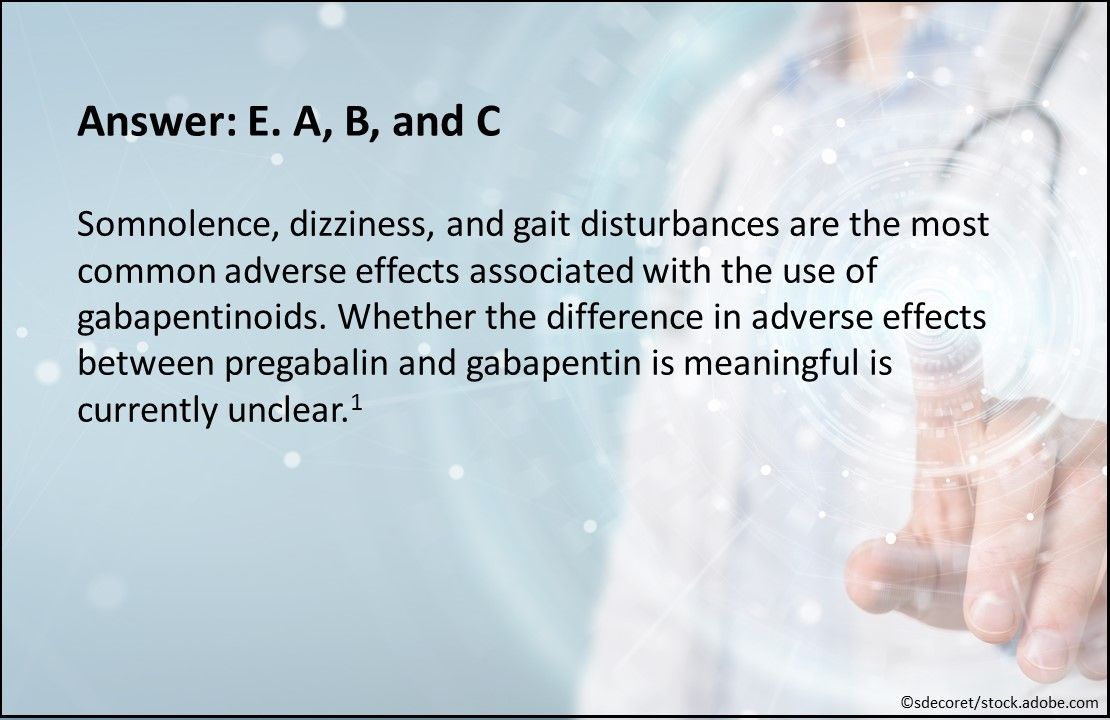
Answer: E. A, B, and C. Somnolence, dizziness, and gait disturbances are the most common adverse effects associated with the use of gabapentinoids. Whether the difference in adverse effects between pregabalin and gabapentin is meaningful is currently unclear.1
Questions 1 and 2 were taken from Gabapentinoids used Off-label for Pain: Effective or Erroneous?
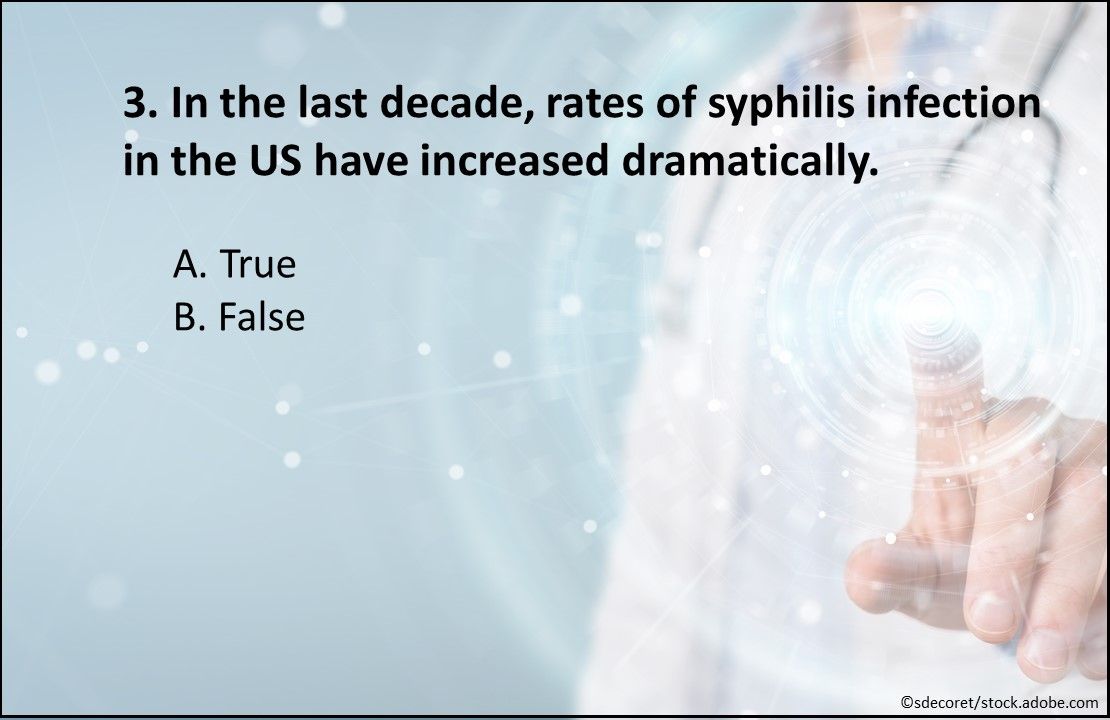
Question 3. True or false? In the last decade, rates of syphilis infection in the US have increased dramatically.
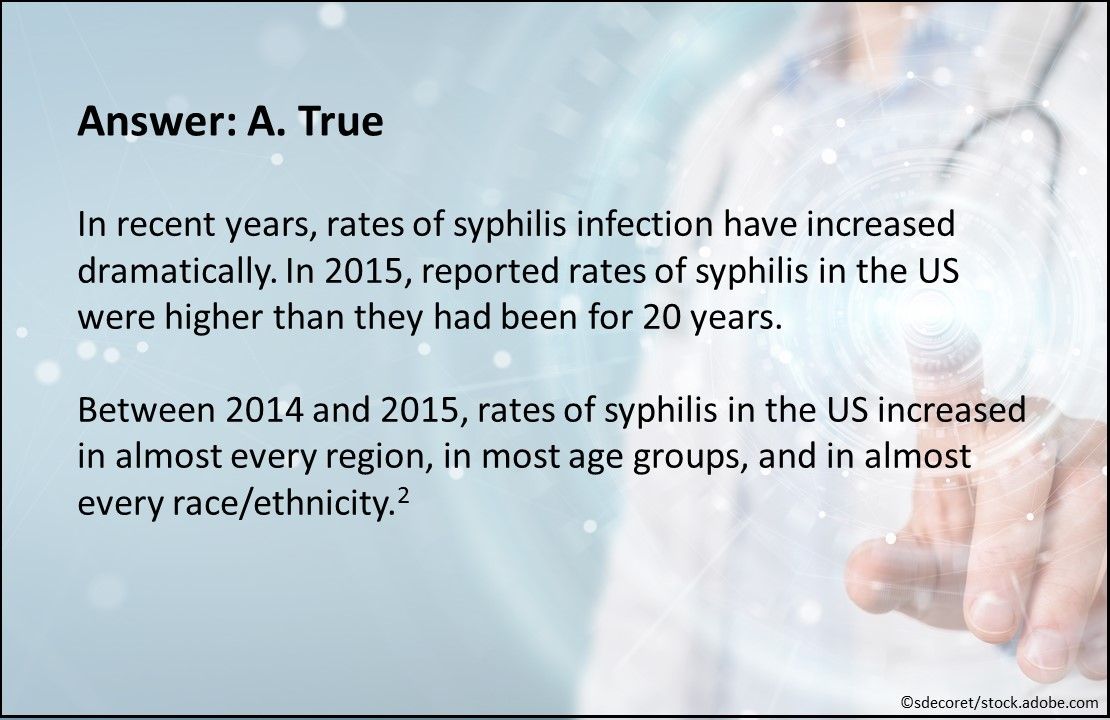
Answer: A. True. In 2015, reported rates of syphilis in the US were higher than they had been for 20 years. Between 2014 and 2015, rates of syphilis in the US increased in almost every region, in most age groups, and in almost every race/ethnicity.2
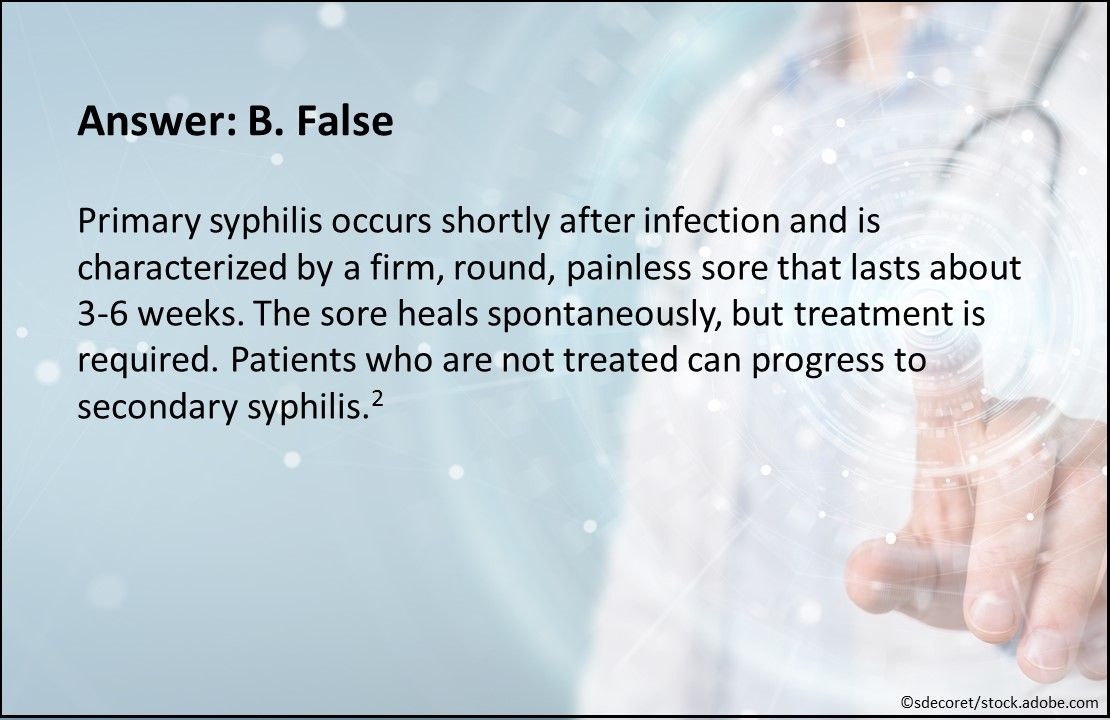
Answer: B. False. Primary syphilis occurs shortly after infection and is characterized by a firm, round, painless sore that lasts about 3-6 weeks. The sore heals spontaneously, but treatment is required to avoid disease progression to secondary syphilis.2
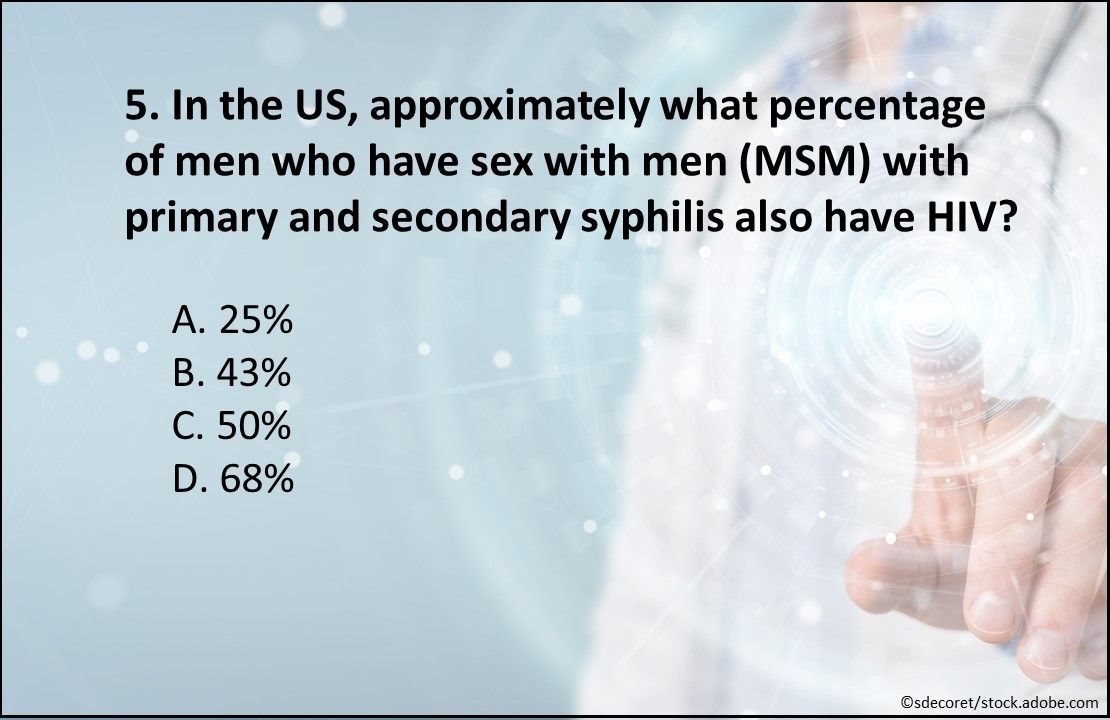
Question 5. In the US, approximately what percentage of MSM with primary and secondary syphilis also have HIV?
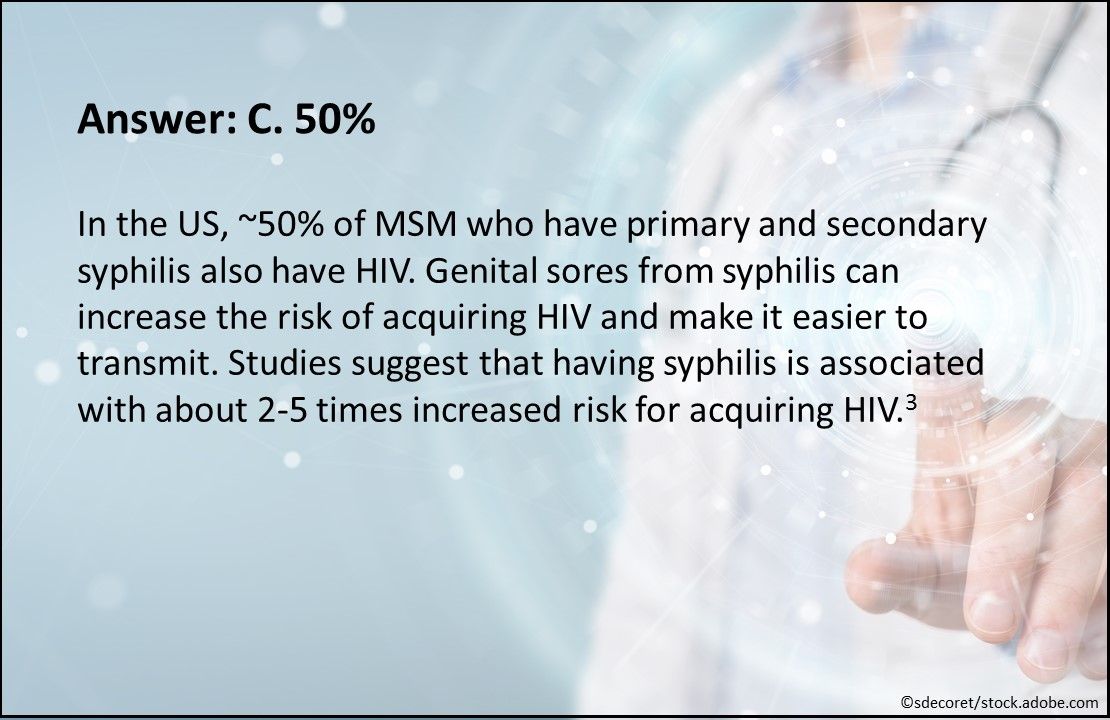
Answer: C. 50%. In the US, ~50% of MSM who have primary and secondary syphilis also have HIV. Genital sores from syphilis can increase the risk of acquiring HIV and make it easier to transmit.3
Questions 3, 4, and 5 were taken from 5 Facts about Syphilis: A Brief Quiz
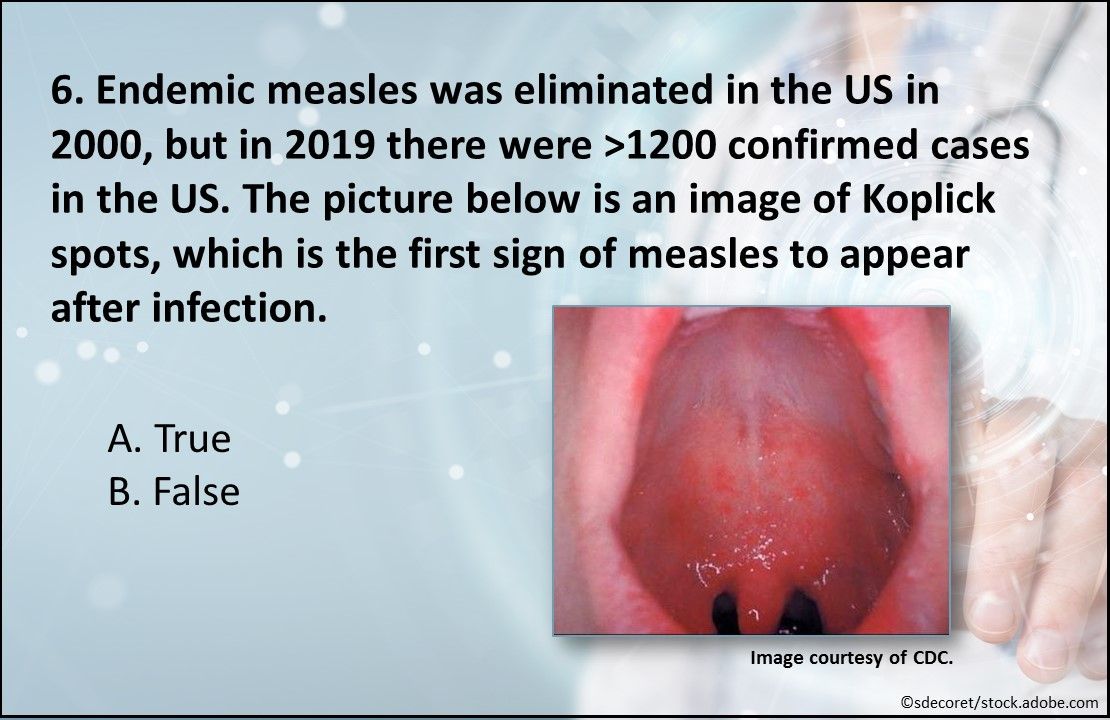
Question 6. True or false? Endemic measles was eliminated in the US in 2000, but in 2019 there were >1200 confirmed cases in the US. The picture above is an image of Koplick spots, which is the first sign of measles to appear after infection.
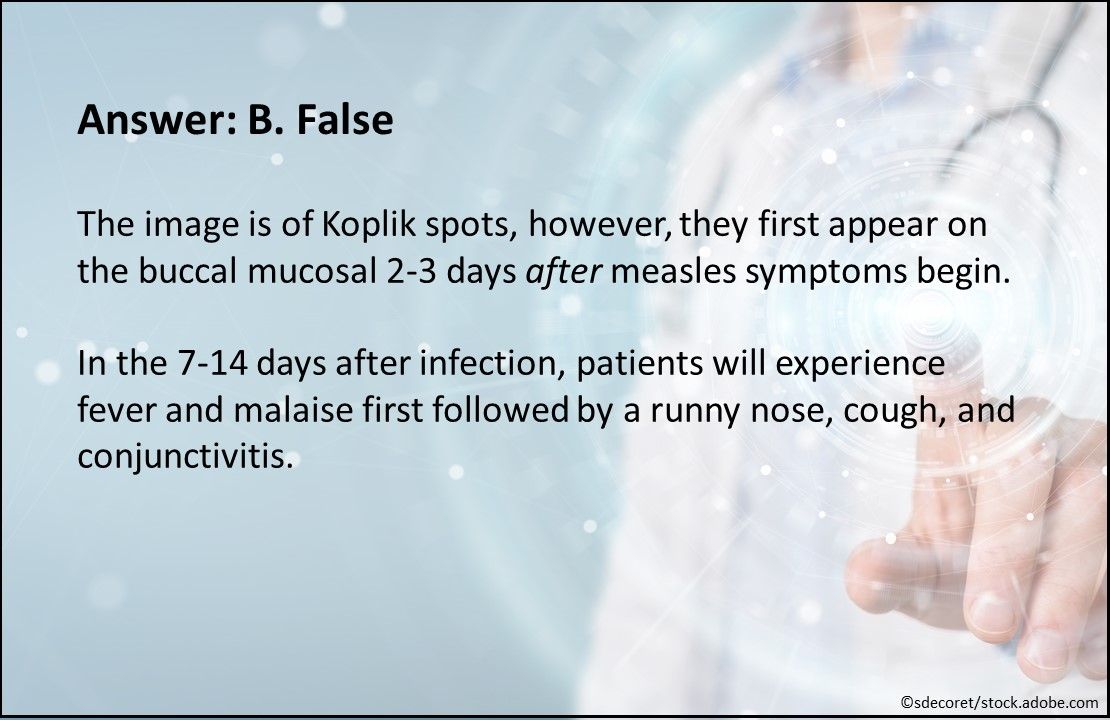
Answer: B. False. Despite endemic measles being eliminated in the US in 2000, there were 1276 confirmed cases in the US in 2019. While the image is of Koplik spots, they first appear on the buccal mucosal 2-3 days after measles symptoms begin.
Question 6 was generated from Measles: Name 5 Key Signs and Symptoms
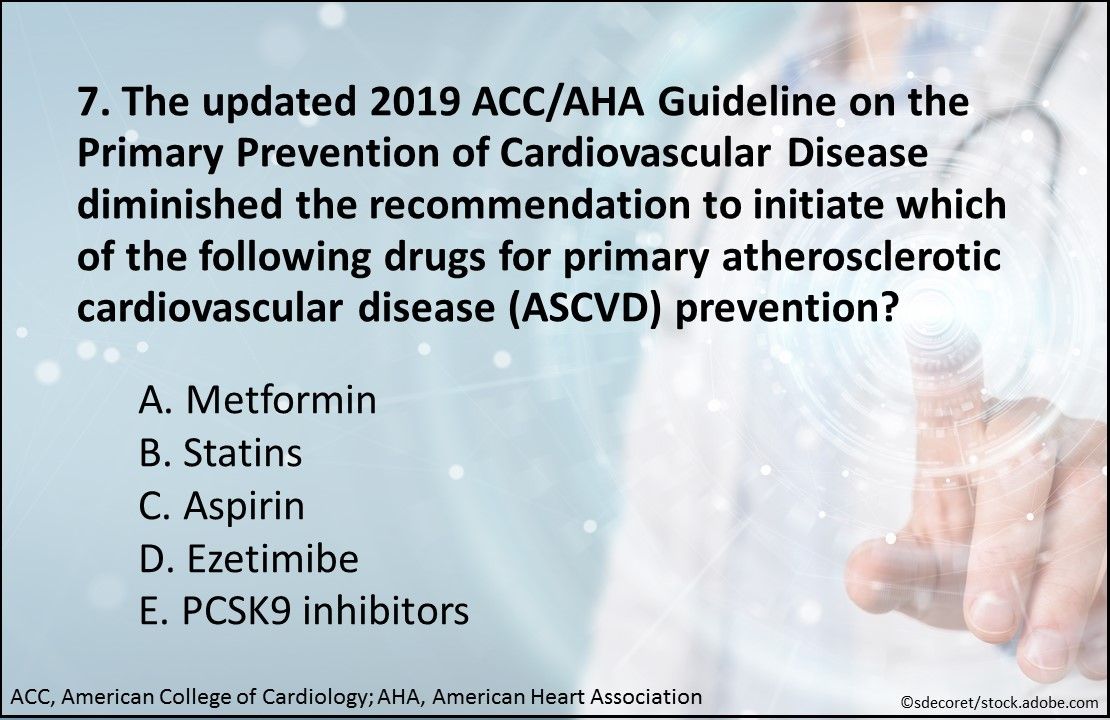
Question 7. The updated 2019 ACC/AHA Guideline on the Primary Prevention of Cardiovascular Disease diminished the recommendation to initiate which of the above drugs for primary ASCVD prevention?
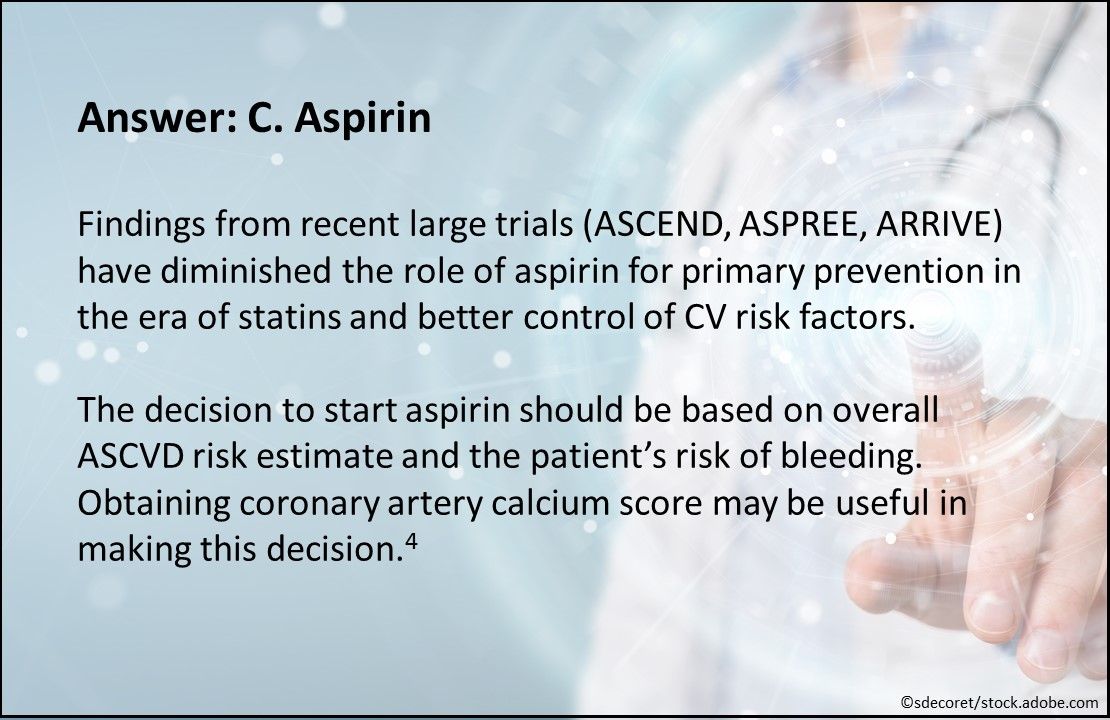
Answer: C. Aspirin. Findings from recent large trials (ASCEND, ASPREE, ARRIVE) have diminished the role of aspirin for primary prevention in the era of statins and better control of CV risk factors. The decision to start aspirin should be based on overall ASCVD risk estimate and the patient’s risk of bleeding. Obtaining coronary artery calcium score may be useful in making this decision.4
This question was generated from Primary Cardiovascular Prevention: 2019 ACC/AHA Guideline Update
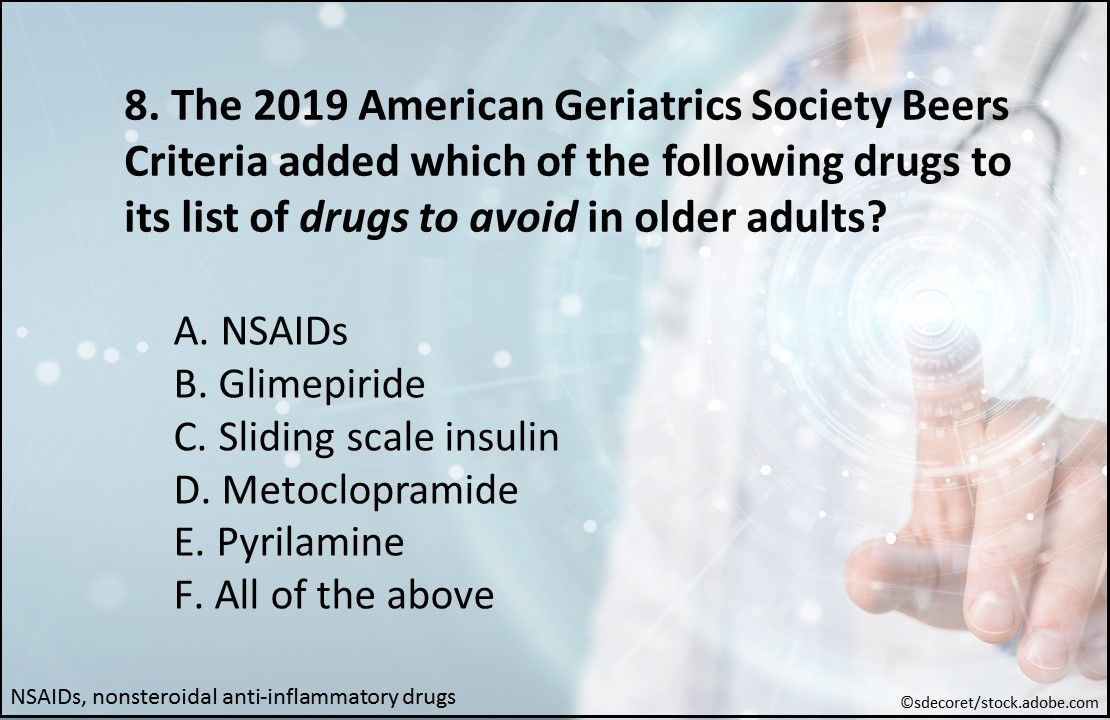
Question 8. The 2019 American Geriatrics Society Beers Criteria added which of the above drugs to its list of drugs to avoid in older adults?

Answer: F. All of the above. Additions to the 2019 Beers list of drugs to avoid that are pertinent to PCPs include sliding scale insulin; NSAIDs, COX-2 inhibitors, glitazones, and dronedarone in symptomatic heart failure; glimepiride; SNRIs in fall/fracture risk; metoclopramide (unless for gastroparesis use of ≤12 weeks); and pyrilamine and methscopolamine.5
This question was generated from American Geriatrics Society 2019 Beers Criteria Update
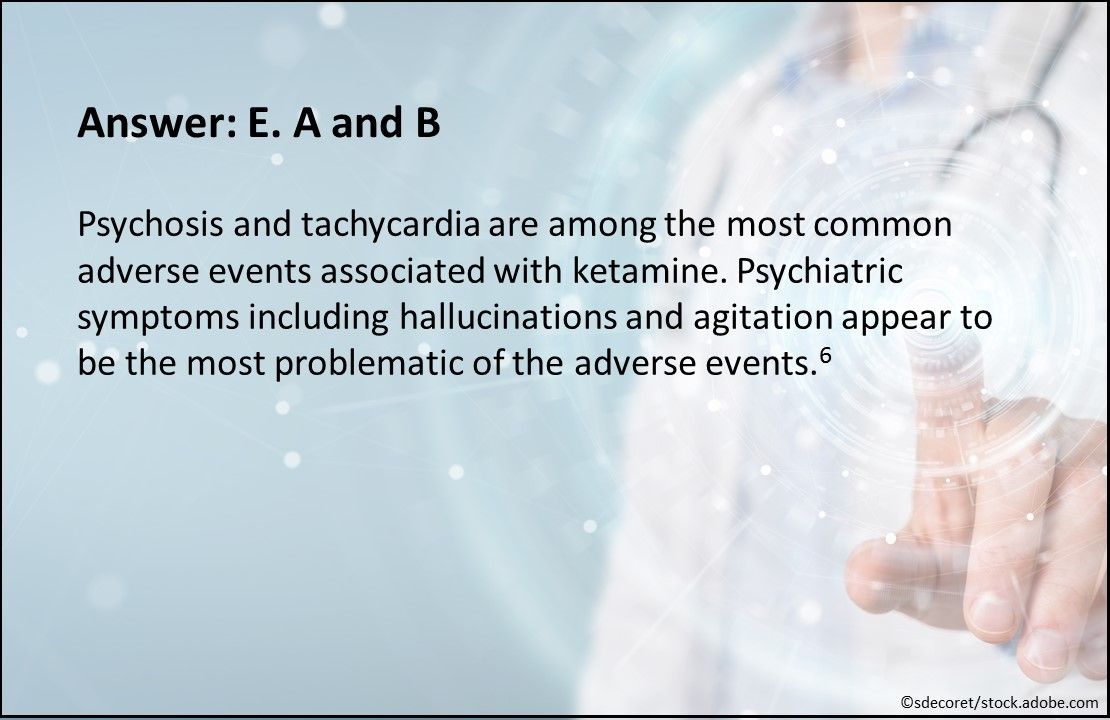
Answer: E. A and B. Psychosis and tachycardia are among the most common adverse events associated with ketamine. Psychiatric symptoms including hallucinations and agitation appear to be the most problematic of the adverse events.6
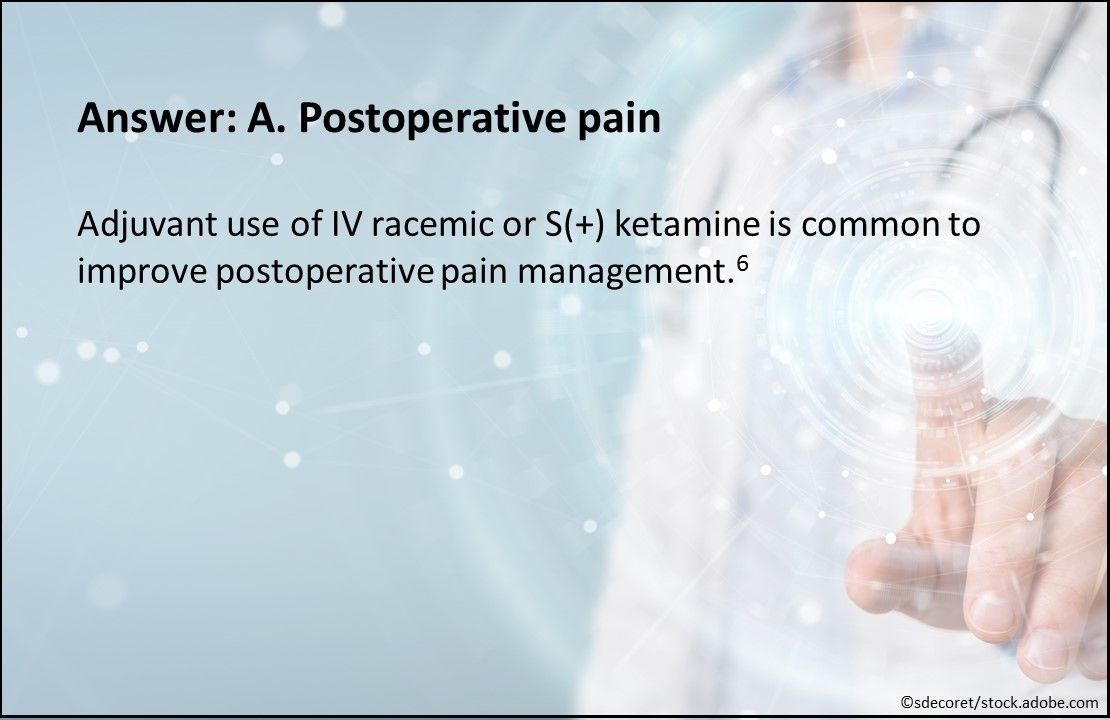
Answer: A. Postoperative pain. Adjuvant use of IV racemic or S(+) ketamine is common to improve postoperative pain management.6
Questions 9 and 10 are taken from Ketamine as an Analgesic: An 11-question Quiz
References:
1. Goodman CW, Brett AS. A clinical overview of off-label use of gabapentinoid drugs. JAMA Intern Med. 2019;179:695-701.
2. Department of Health & Human Services. Syphilis. https://www.hhs.gov/opa/reproductive-health/fact-sheets/sexually-transmitted-diseases/syphilis/index.html. Updated March 29, 2019. Accessed December 17, 2019.
3. Centers for Disease Control and Prevention. Syphilis - CDC Fact Sheet (Detailed). https://www.cdc.gov/std/syphilis/stdfact-syphilis-detailed.htm. Updated January 30, 2017. Accessed December 17, 2019.
4. Arnett DK, Blumenthal RS, Albert MA, et al. 2019 ACC/AHA guideline on the primary prevention of cardiovascular disease: A report of the American College of Cardiology/American Heart Association task force on clinical practice guidelines. J Am Coll Cardiol. 2019;74:e177-e232.
5. 2019 American Geriatrics Society Beers Criteria® Update Expert Panel. American Geriatrics Society 2019 Updated AGS Beers Criteria® for potentially inappropriate medication use in older adults. J Am Geriatr Soc. 2019;67:674-694.
6. Bell RF, Kalso EA. Ketamine for pain management. Pain Rep. 2018;3:e674.
Stay in touch with Patient Care® Online:
→Subscribe to ourNewsletter →Like us on Facebook →Follow us on Twitter →Write or Blog for Patient Care® Online→Follow us on LinkedIn
The measles resurgence, opioid alternatives, new CVD prevention guidelines, and a Beers list update were some of the most popular 2019 primary care topics covered on Patient Care® Online. So, in the spirit of end-of-the-year reflection, the editors looked back on the well-read content and generated 10 questions to test your memory of the year’s highlights.  Think you can get all 10 right? Find out below!
Related Content:







